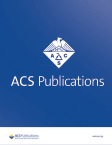摘要 PS05-09:氟维司群联合化疗新辅助治疗HR+/HER2-局部晚期乳腺癌的单臂II期临床研究
IF 3.4
Q2 PUBLIC, ENVIRONMENTAL & OCCUPATIONAL HEALTH
引用次数: 0
摘要
背景:研究发现,HR+/HER2-乳腺癌对新辅助化疗(NCT)的敏感性较低,客观反应率(ORR)约为 65%。内分泌治疗联合化疗可能有助于提高这些患者的客观反应率。这项II期研究的目的是评估HR+/HER2-局部晚期乳腺癌(LABC)患者在NCT基础上加用氟维司群的疗效和安全性。此外,该研究还旨在探讨18F-FES PET/CT和代谢物与疗效的关系。研究方法在这项单臂II期研究中,符合条件的患者为经组织学证实患有HR+/HER2- LABC(IIB-IIIC期)的女性。患者接受氟维司群(500 毫克,第 0、14、28 天,之后每 28 天一次,每 4 周一次,共 6 个周期)加 AC-T 方案治疗,然后进行手术。绝经前妇女同时接受 GnRH 类似物治疗。患者在开始使用氟维司群前接受18F-FES PET/CT检查,并在基线时收集血浆样本进行LC-MS分析。主要终点是ORR。次要终点包括病理完全反应(tpCR)和安全性。研究结果从 2020 年 12 月到 2022 年 9 月,共有 36 名患者入组。中位年龄为53岁(35-67岁)。78%的患者 ECOG PS 为 1,69%为绝经后患者,92%为结节受累患者,83%为 III 期患者。经过新辅助治疗后,ORR为86.1%。所有患者都完成了手术,tpCR率为8.3%(3/36)。80.6%的患者(29/36)被归类为米勒-佩恩(MP)分级≥3级。22%的参与者(8/36)发生了≥3级治疗突发不良事件(TEAEs)。最常见的TEAE是中性粒细胞减少(13.9%)和白细胞减少(8.3%)。与基线相比,术后病理中ER、PR和Ki-67的表达明显下降(p < 0.05)。此外,ER表达量的变化与原发性乳腺肿瘤的回归体积明显相关(R = 0.56,p = 0.0044)。MP≥4患者ER值的下降幅度明显大于MP≤3患者(p = 0.0054)。在36名患者中,有24人在开始使用氟维司群之前完成了18F-FES PET/CT扫描。原发性乳腺病变的平均SUVmax为4.17(范围1.00-12.80)。乳腺病变的 SUVmax 与临床疗效(p = 0.0018)和治疗前后 ER 表达的变化(R = 0.68,p = 0.00023)显著相关。同时,MP≥4级患者的SUVmax明显高于MP≤3级患者(p=0.018)。共有 25 份血浆样本可用于代谢分析。在这些样本中,MP≥4级患者和MP≤3级患者之间发现了13种不同的代谢物,它们在19种代谢通路中明显富集。结论是对HR+/HER2- LABC患者而言,在NCT中添加氟维司群显示了可控的毒性和良好的抗肿瘤活性。18F-FES PET/CT可作为预测新辅助联合疗法疗效的工具。代谢物或代谢途径的改变可能与这种联合治疗方法的反应有关。关键词:乳腺癌;HR+/HER2-;氟维司群;新辅助治疗;18F-FES PET/CT 引文格式:邵清,吴静,张宁宁,曾晓华.氟维司群联合化疗新辅助治疗HR+/HER2-局部晚期乳腺癌的单臂II期临床研究[摘要].In:2023年圣安东尼奥乳腺癌研讨会论文集;2023年12月5-9日;德克萨斯州圣安东尼奥。费城(宾夕法尼亚州):AACR; Cancer Res 2024;84(9 Suppl):Abstract nr PS05-09.本文章由计算机程序翻译,如有差异,请以英文原文为准。
Abstract PS05-09: A single-arm Phase II clinical study of fulvestrant combined with chemotherapy in the neoadjuvant treatment of HR+/HER2- locally advanced breast cancer
Background:
HR+/HER2- breast cancer has been found to be less sensitive to neoadjuvant chemotherapy (NCT), leading to an objective response rate (ORR) of approximately 65%. Endocrine therapy combined with chemotherapy may help improve the ORR in these patients. The objective of this Phase II study was to evaluate the efficacy and safety of adding fulvestrant to NCT in patients with HR+/HER2- locally advanced breast cancer(LABC). Additionally, the study aimed to investigate the association of 18F-FES PET/CT and metabolites with efficacy.
Methods:
In this single-arm Phase II study, eligible patients were females with histologically confirmed HR+/HER2- LABC (Stage IIB-IIIC). Patients received fulvestrant (500 mg, on days 0, 14, 28, then every 28 days thereafter, every 4 weeks for six cycles) plus AC-T regimen, followed by surgery. Premenopausal women were administered a concomitant GnRH analogue. Patients underwent 18F-FES PET/CT before the initiation of fulvestrant, and plasma samples were collected for LC-MS analysis at baseline. The primary endpoint was ORR. Secondary endpoints included pathological complete response (tpCR) and safety.
Results:
From December 2020 to September 2022, 36 patients were enrolled. The median age was 53 years (range35-67). 78% were ECOG PS of 1, 69% were postmenopausal, 92% were nodal involved, and 83% were in stage III. After neoadjuvant therapy, the ORR was 86.1%. All patients completed the surgery, with a tpCR rate of 8.3% (3/36). 80.6% (29/36) patients were classified as Miller-Payne (MP) grade ≥3. Grade ≥3 treatment-emergent adverse events (TEAEs) occurred in 22% (8/36) of the participants. The most common TEAEs were neutropenia (13.9%) and leukopenia (8.3%). The expression of ER, PR, and Ki-67 in postoperative pathology significantly decreased compared to baseline (p < 0.05). Additionally, the change in ER expression was significantly correlated with the regression volume of primary breast tumors (R = 0.56, p = 0.0044). The decrease in ER value in patients with MP ≥ 4 was significantly larger than in patients with MP ≤ 3 (p = 0.0054). Among the 36 patients, 24 completed the 18F-FES PET/CT scan before initiating fulvestrant.The average SUVmax in primary breast lesions was 4.17 (range 1.00-12.80). The SUVmax of breast lesions was significantly correlated with clinical efficacy (p = 0.0018) and with changes in ER expression before and after treatment (R = 0.68, p = 0.00023). Meanwhile, the SUVmax of patients with MP ≥ 4 grade was significantly higher than that of patients with MP ≤ 3 grade (p=0.018). A total of 25 plasma samples were available for metabolic analysis. Among these samples, 13 differential metabolites were identified between patients with MP ≥ 4 grade and MP ≤ 3 grade, which were markedly enriched in 19 metabolic pathways.
Conclusions: The addition of fulvestrant to NCT showed manageable toxicity and promising antitumor activity for patients with HR+/HER2- LABC. 18F-FES PET/CT might serve as a tool to predict the effectiveness of neoadjuvant combination therapy. Altered metabolites or metabolic pathways might be associated with the response to this combined treatment approach.
Keywords: breast cancer, HR+/HER2-, fulvestrant, neoadjuvant treatment, 18F-FES PET/CT
Citation Format: Qing Shao, Jing Wu, Ningning Zhang, Xiaohua Zeng. A single-arm Phase II clinical study of fulvestrant combined with chemotherapy in the neoadjuvant treatment of HR+/HER2- locally advanced breast cancer [abstract]. In: Proceedings of the 2023 San Antonio Breast Cancer Symposium; 2023 Dec 5-9; San Antonio, TX. Philadelphia (PA): AACR; Cancer Res 2024;84(9 Suppl):Abstract nr PS05-09.
求助全文
通过发布文献求助,成功后即可免费获取论文全文。
去求助
来源期刊

ACS Chemical Health & Safety
PUBLIC, ENVIRONMENTAL & OCCUPATIONAL HEALTH-
CiteScore
3.10
自引率
20.00%
发文量
63
期刊介绍:
The Journal of Chemical Health and Safety focuses on news, information, and ideas relating to issues and advances in chemical health and safety. The Journal of Chemical Health and Safety covers up-to-the minute, in-depth views of safety issues ranging from OSHA and EPA regulations to the safe handling of hazardous waste, from the latest innovations in effective chemical hygiene practices to the courts'' most recent rulings on safety-related lawsuits. The Journal of Chemical Health and Safety presents real-world information that health, safety and environmental professionals and others responsible for the safety of their workplaces can put to use right away, identifying potential and developing safety concerns before they do real harm.
 求助内容:
求助内容: 应助结果提醒方式:
应助结果提醒方式:


